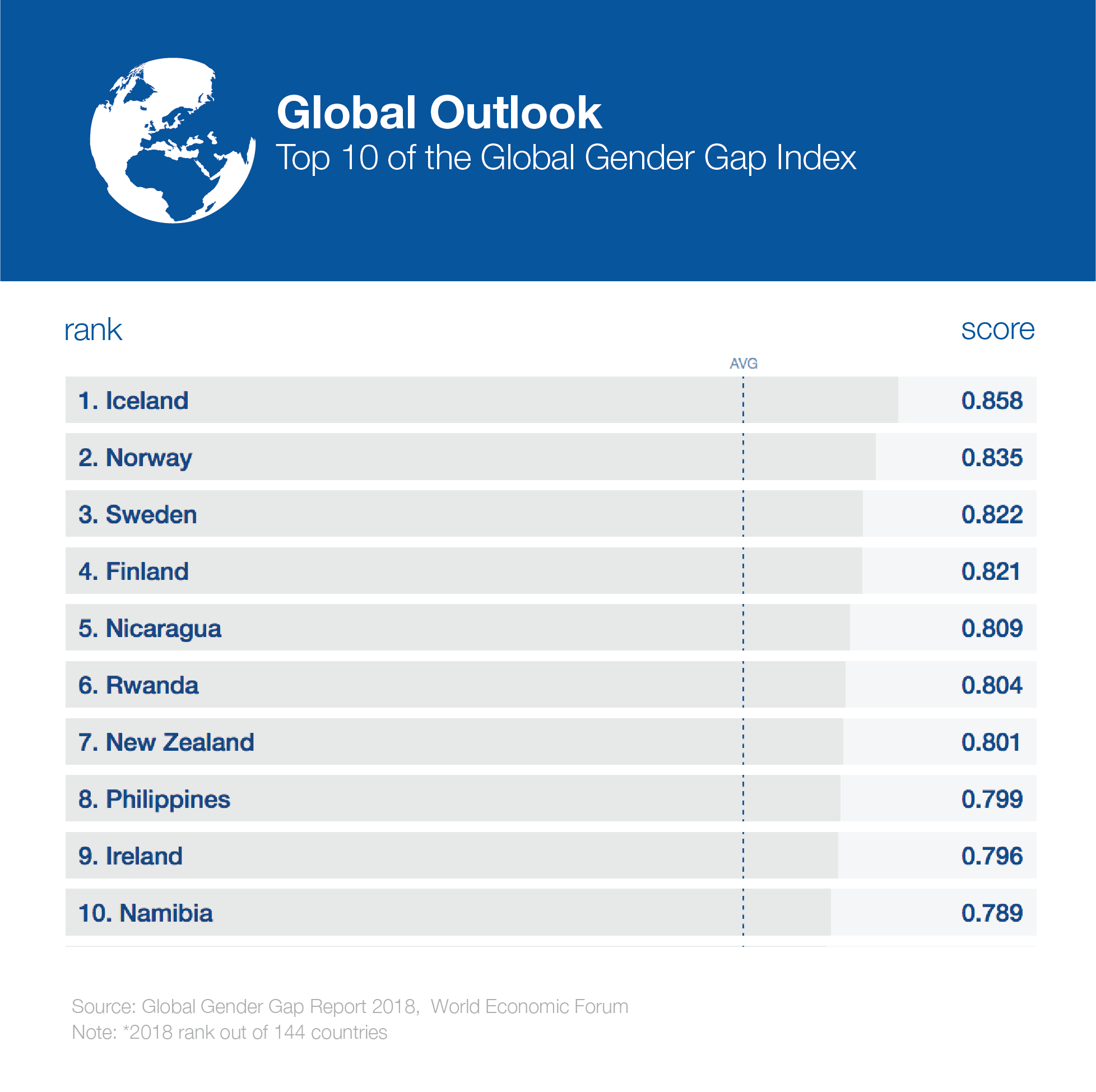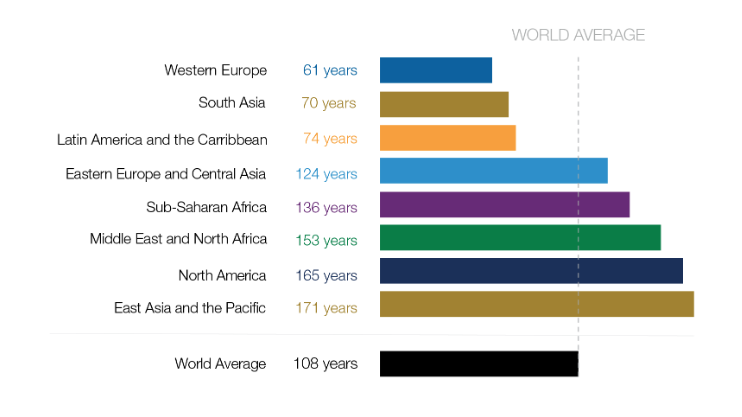Although the gender gap narrowed slightly in 2018, data show that access to health and education and political empowerment have worsened. If this trend continues, it would take 108 years on average to reach parity.
Iceland, Norway and Sweden, in this order, lead the ranking of states with the highest gender parity in the world. These are date provided in the Global Gender Gap Report 2018, published by the World Economic Forum, a non-profit foundation based in Geneva (Switzerland).
The report follows the progress towards gender parity in 149 countries, based on four thematic dimensions: economic participation and opportunity, educational attainment, health and survival, and political empowerment.
The World Economic Forum has published this report since 2006; since then, the gender gap has narrowed every year except for 2017. For the first time, that year the gender gap grew. Overall, 2018 saw the gender gap narrow again, but only slightly. In fact, it only narrowed in one dimension: economic opportunity.
The salary gap narrows, but women find it increasingly difficult to access the labour market
The report identifies two main causes that explain the improvement in economic opportunity: the gender pay gap has shrunk, although it remains at 51%; and the number of women in managerial positions has risen to 34%.
Nevertheless, not all has improved in economic terms, as proportionally there are fewer women than men on the labour market. This is due to several causes: automation is having a disproportionate impact on the roles traditionally performed by women and women are under-represented on growing fields of work that require skills and knowledge in STEM (science, technology, engineering and mathematics).
Furthermore, the infrastructure that is needed to help women access or return to the labour market (such as taking care of children or elderly people) is not well developed and unpaid work is mainly done by women.
Growing inequalities in political participation
The report explains that, from all dimensions assessed, the one with the widest gender gap is that on political empowerment, which maintains a gap of 77.1%. Far from improving, in 2018 the situation worsened: there were fewer women as heads of state than in previous years, pushing down the score for the political empowerment of women. Across the 149 countries assessed, on 17 currently have women as heads of state and just 18% of ministers and 24% of parliamentarians globally are women.
In this regard, there is a strong regional divide. The report highlights that in the 22 “western economies”, the political representation of women has improved, while it has worsened for the rest of the world.
Rwanda and Namibia among the top 10
It comes as no surprise that the most gender-equal countries are in northern Europe, Iceland comes first, followed by Norway, Sweden and Finland. These four countries have managed to narrow the gender gap by more than 80%.
On the list of the top 10, we also find a Central American country (Nicaragua, 5th), two Sub-Saharan states (Rwanda, 6th and Namibia, 10th)), and two states in South-East Asia (New Zealand, 7th, followed by the Philippines, 8th). The top 10 is completed by Ireland, 9th. Spain comes in 29th on the list.
The states with the biggest gender gap are Yemen (ranking 149th), Pakistan (148th) and Iraq (147th).

When could we reach gender parity?
On average, Western Europe is the region with the highest gender parity in the world, with a gender parity of 75.8%. Still, if current rates are maintained, the gender gap won’t be closed until 61 years from now. The remaining regions would need much longer, with East Asia and the Pacific needing 171 years.
On average, the world would need 108 years. Klaus Schwab, the founder and executive chairman of the World Economic Forum says that, to speed up change and shorten the path towards gender parity, we need proactive measures to support gender parity and social inclusion and deal with historical imbalances.






Add new comment